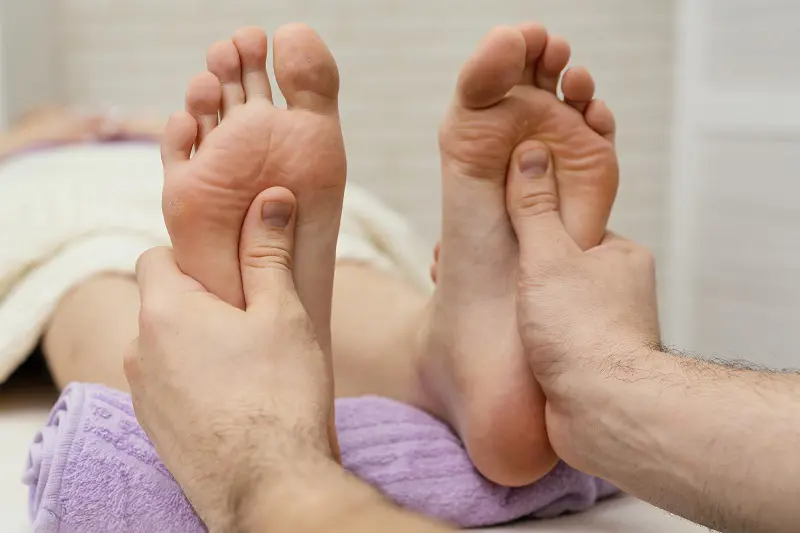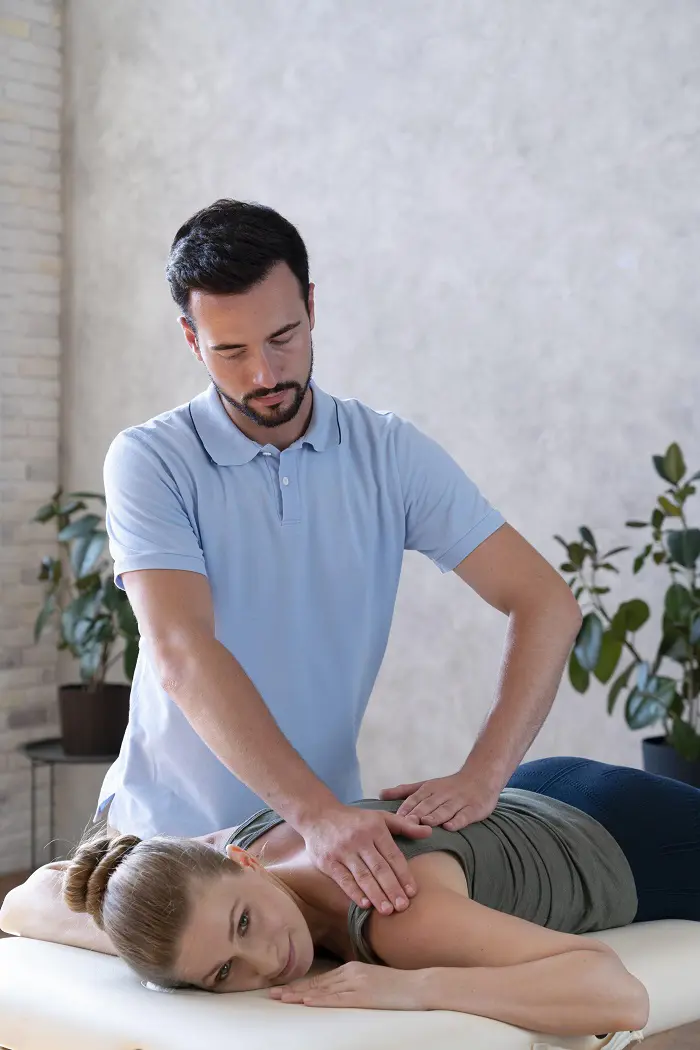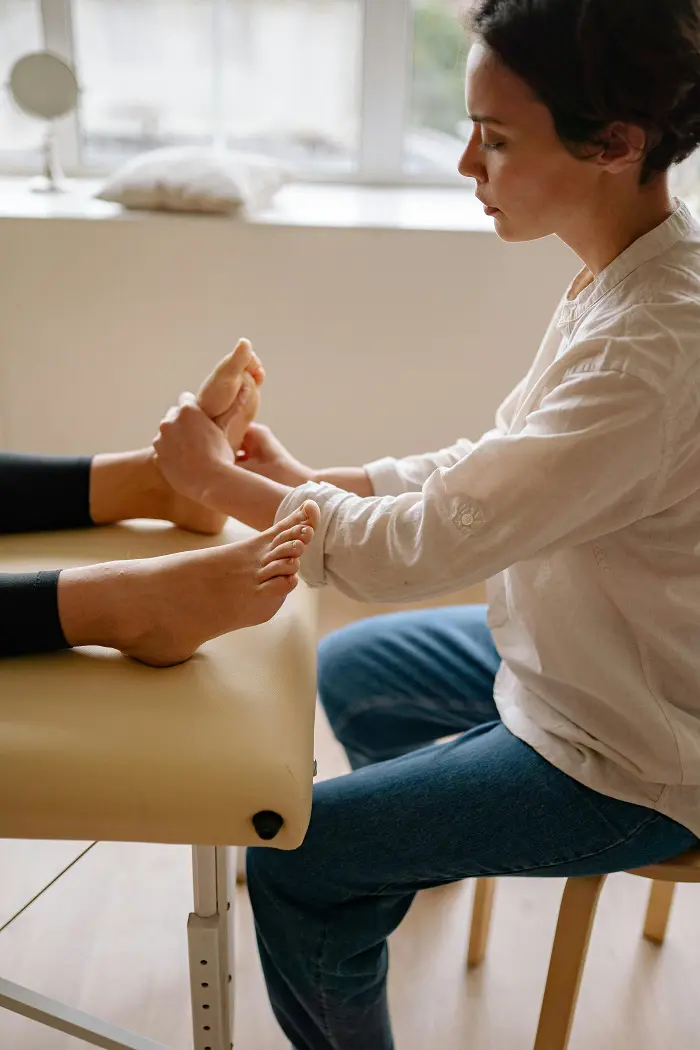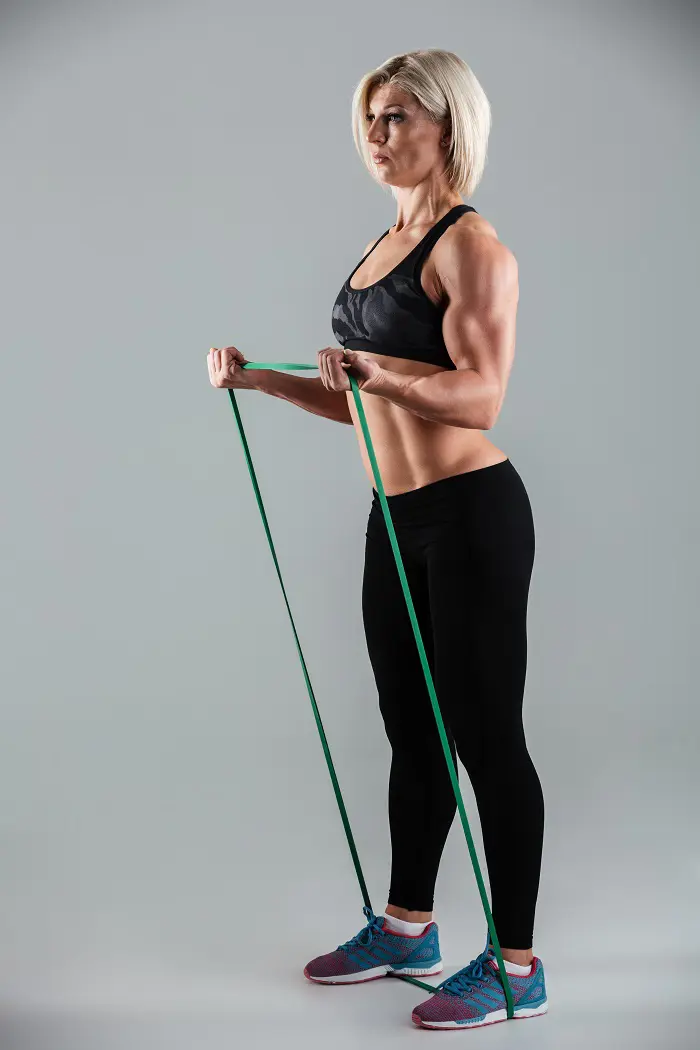How To Do A Back Massage: 15 Steps + Pictures

Do you want to give a nice and soothing back massage but are confused about where to start? If you want to improve your massage skills or help a loved one relax after a day full of stress, the right moves can make all the difference.
A good back massage promotes anti-stress, delivers relaxation, and improves general well-being. Here are 15 easy steps to understand how to do back massage:
1. Create Suitable Environment
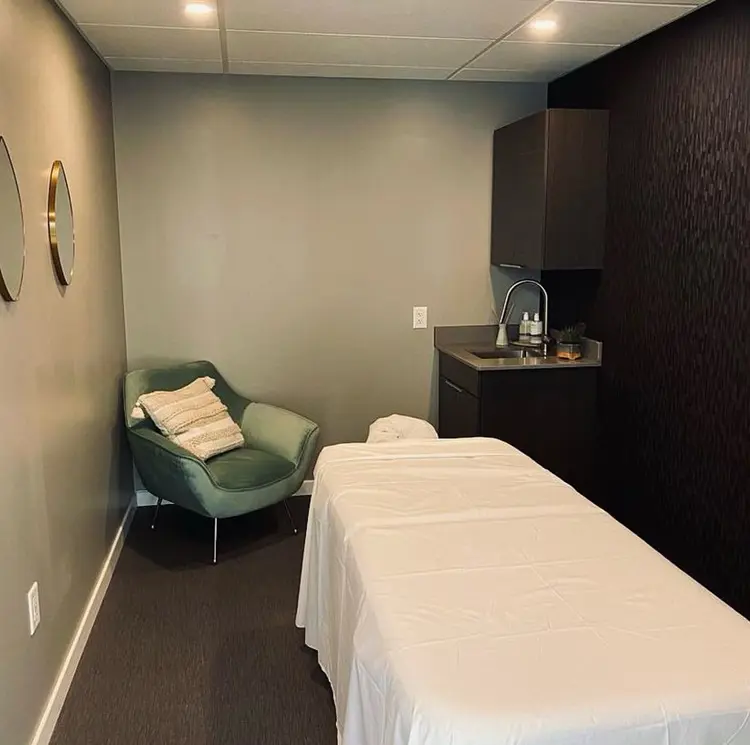
Ever wonder the first thing you need for a back massage? Select a quiet place away from disturbance and dim the light level to set a relaxing mood. Play soothing music or the sound of nature for a better experience.
Similarly, keep the room temperature warm and have some blankets or towels ready. The peaceful and relaxed atmosphere allows both the receiver as well as the massage giver to be more comfortable and thus enhances the overall experience.
2. Prepare Area
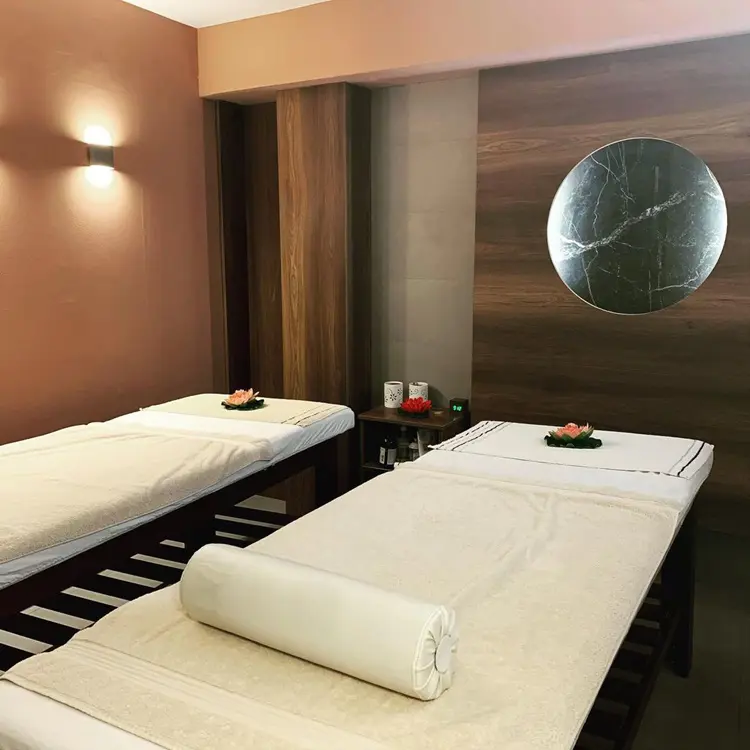
Preparation of the area is necessary for comfort and relaxation during a back massage. Always select a comfortable surface floor with a yoga mat, firm bed, or massage table.
Place a soft sheet or clean towels for additional comfort. Extra towels should be available to maintain coverage for warmth and privacy. Position all your lotions, massage oils, and essential oils within easy reach. Also, choose a room with enough space to walk around while massaging in a peaceful and orderly space.
3. Ask For Preferences

Before performing any form of massage around the back, you need to know the certain preferences for a comfy and enjoyable massage. Don't forget to ask your client whether there is any area they would want special attention or want to avoid due to pain, stiffness, or sensitivity.
It is also important to ensure their safety by disclosing any pre-existing medical condition or injury. Discuss preferences in applying lotions, oils, or other aromas to avoid any kind of discomfort.
4. Use Massage Oil

The application of the oil or lotion is an important preliminary step that will ensure the smoothness and relaxing nature of the back massage. It reduces friction, enabling hands to glide over skin without causing damage when applied properly.
Begin by choosing an appropriate oil or lotion. Most people love using natural oils that hydrate the skin, such as jojoba, coconut, and almond oil. Heat a little of the oil or lotion between the palms before applying it to the skin.
5. Start Gently
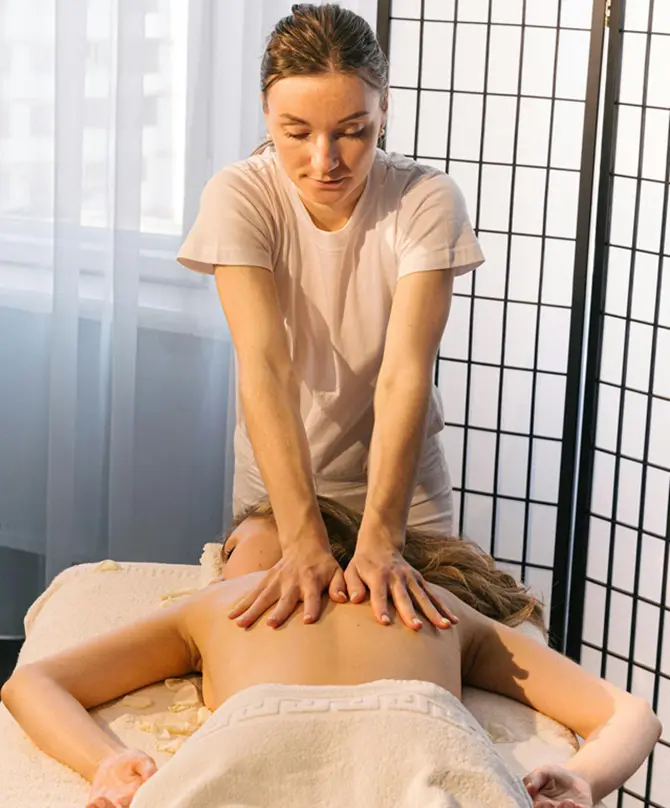
Gentle stroking is always ideal as an opener for any back massage because it sets the right mood for the rest of the activity. Start the massage softly on the back, which aids in opening the blood vessels and softening the body for deeper pressure afterward.
Continue bringing your hands up at a steady pace from the lower back up to the shoulders, keeping your palms flat without digging into the back. Afterward, lightly massage in a circular motion to keep the receiver comfortable. You can now initiate a variation in the intensity of your strokes as their muscles have started loosening up.
6. Knead The Muscles

It is one of the major steps involved in any effective back massage, as it releases tension and stress from deeper muscular layers. After a gentle stroking, apply consistent force on muscles with fingers and thumbs to remove strain.
Pay special attention to the shoulders, lower back, and upper spine, where tension tends to accumulate. Move at a slow pace by using rhythmic lifting and pressing action into the muscles. Kneading also breaks up muscle knots and improves blood flow, which releases build-up.
7. Focus On Tight Areas
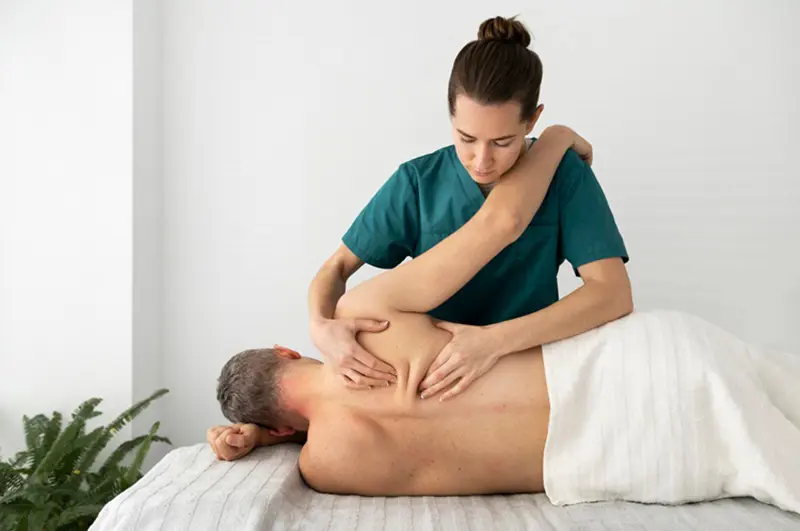
This will be an important step for observing which parts of the back hold the highest state of tension, rigidity, or stress. The neck, shoulders, or lower back experience most of the physical stress and day-to-day tensions. Once located, relieving tension is far more effective with deeper and more concentrated strokes.
Targeted massage requires firm, deep pressure with thumbs, fingers, or knuckles. Press lightly on a tightened muscle and gradually increase the intensity to avoid pain. These techniques also target knots to help loosen tight muscles.
8. Use Thumb Pressure
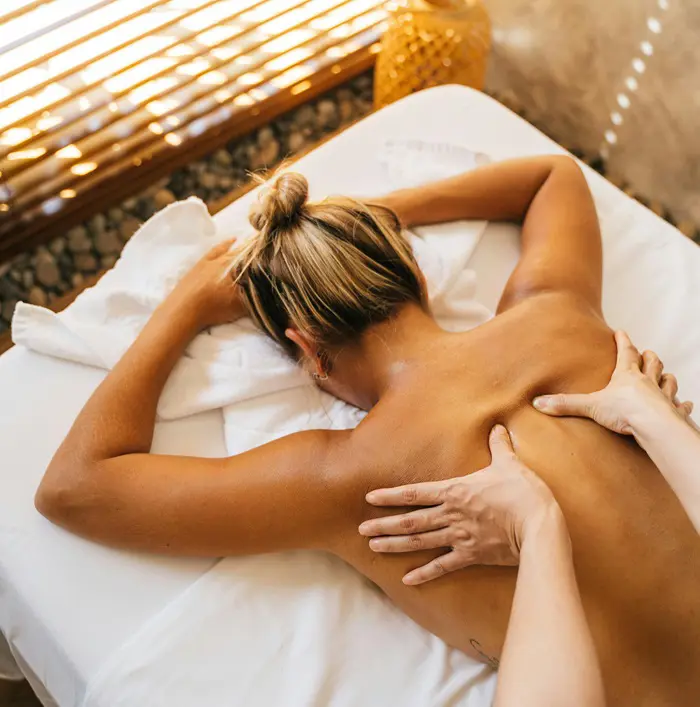
Thumb Pressure can be a game-changer for a more focused and effective back massage. It is easier to apply much more concentrated and direct pressure with your thumbs to specific areas of muscle strain. Press your thumbs on either side of the spine without pushing directly on the bone.
When a knot or tight spot is found, apply more pressure and make small circular motions to lessen the stress, which allows deeper layers of muscle to relax. This will mainly help in releasing tight muscles, reduce pain, and leave you with a calm and refreshed mood.
9. Perform Petrissage
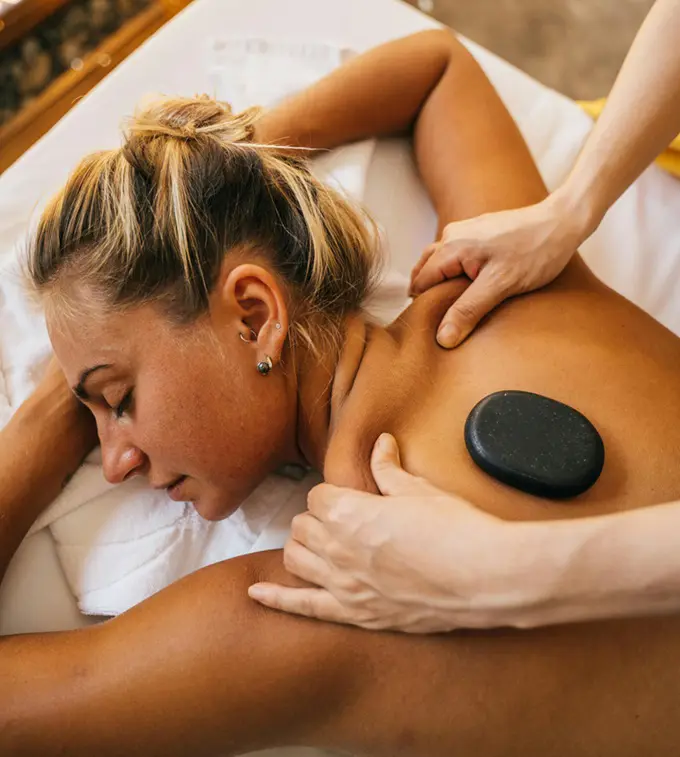
If you incorporate petrissage massage techniques for back pain, you will dramatically enhance the significance of a back massage. Kneading, rolling, and lifting muscles are defining features of petrissage, which aims to increase blood flow and loosen constricted muscles.
With your fingers and palmar surfaces, grasp and knead the muscles. Also, keep in mind that your pressure must be light and steady.
Petrissage is a wonderfully useful technique that helps the muscles relax and relieves discomfort and stiffness. You will notice a big change in improving the flexibility of the muscles and provide a relaxed mindset.
10. Use Muscle Lifting
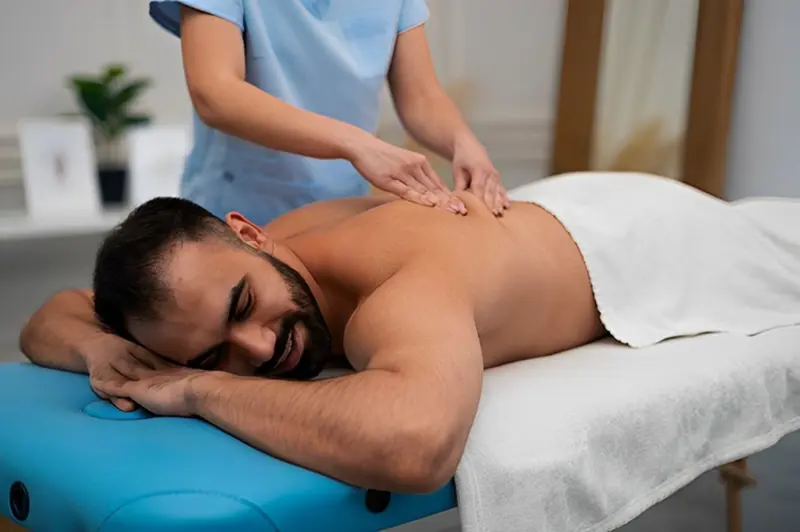
Including the muscle-lifting massage techniques for back will promote deeper relaxation and improve muscle functioning. To do this, lightly grasp a small portion of the muscle between your palm and fingers, then lift it slightly away from the underlying tissues. This will surely target the in-depth layers of the muscle itself and improve blood circulation to the affected region.
Smooth and slow lifts from the up to down position are necessary for proper muscle activation. This assists in encouraging better mobility and relaxation of the muscle fibers, which will be a great addition to your general massage modality.
11. Apply Fanning Technique
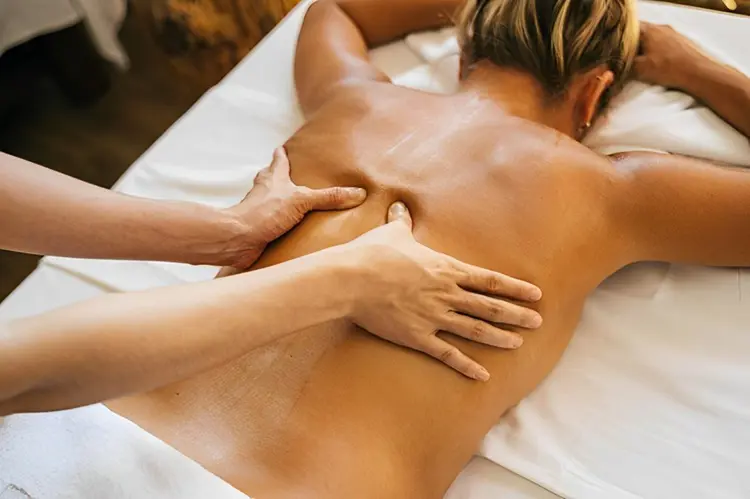
When learning about how to give back massage, fanning technique is an essential factor to understand. It means sweeping the muscles with your hand in a circular motion. Rest your palm or fingers on the massage area, gently stretch out your hands, and move them outward.
The techniques should be used with smooth and equal strokes, which tend to apply the massage pressure equally to different muscle groups. It is especially useful for addressing larger areas and providing a balanced approach to the massage.
12. Apply Twists
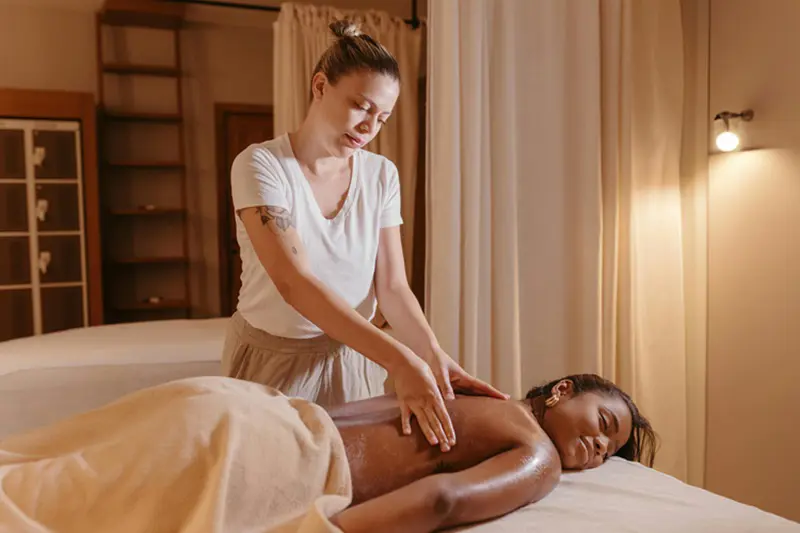
When performing a massage on the back, this technique allows you to go deeper into the musculature layers, which generally increases the efficiency of your abdomen.
Start with your hands placed on the back, positioning the fingers or palms however you like at the beginning of your movement. Spiral or rotate the hand from left to right as you apply light pressure, which will be controlled by twisting to cover the entire region.
The twists should be more resonant in the tissue than the normal strokes that involve a different muscle engagement. Allow your twists to be smooth so that you do not cause any pain.
13. Use Tapotement
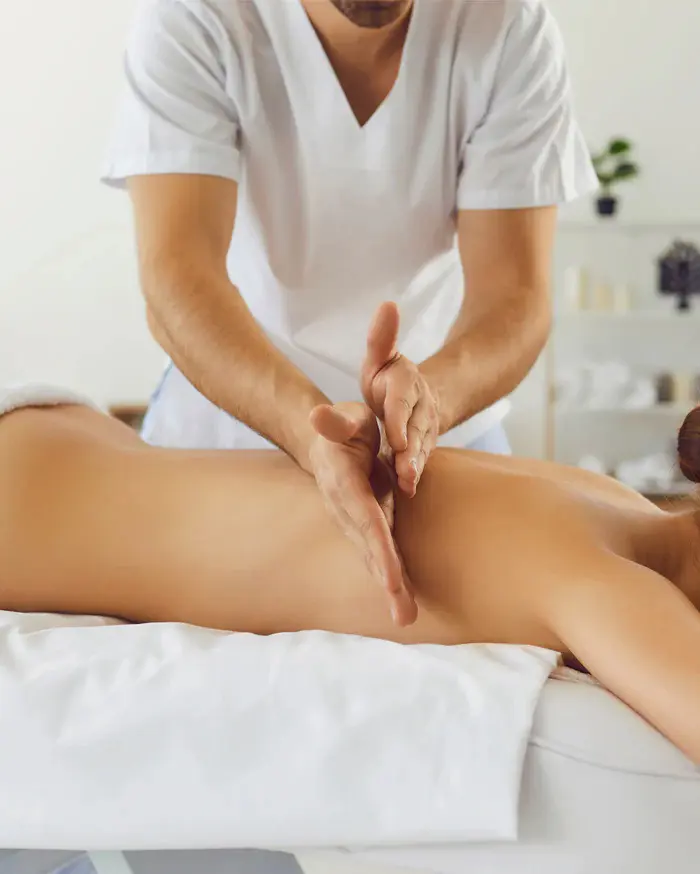
Dynamic massage techniques like tapotement energize the back with their rhythmic and percussion-based movements. The back is massaged by tapping with the fingertips or edges of the hands in quick succession.
It will create a vibrant effect that can activate external muscles. The tapotement can be made with all forms of rhythm and powerful taps. This also helps break up muscle tension and contributes to creating a comprehensive massage experience.
14. Perform Long Strokes
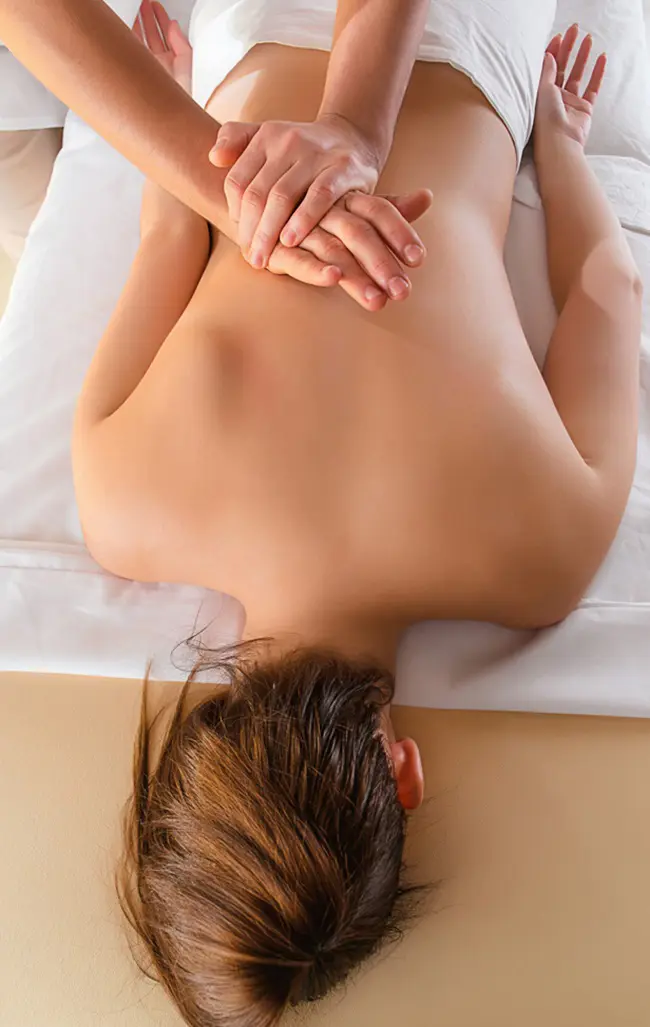
Always complete the back massage with some long and flowing strokes. Glide smoothly across the back using a hand or fingertips in flowing motions from the lower back toward the shoulders. This helps give the massage a feeling of closure and harmony.
Long strokes are a soothing end to the massage. Make each stroke long and evenly pressed down, and do not jerk, which will also help maintain general comfort for the receiver.
15. Wrap Up

Remember that the back massage should end with a light touch. Release the weight in slow motion and lessen the contact. When you are finished, it is recommended to take a few deep breaths because this last phase transitions the body from the deeper manipulations into a relaxed state.
Put all the necessary equipment like towels, oil bottles, and bed sheets in a proper place. Also, allow them a minute to sit up and gather their composure. Suggest drinking some water to help flush out any toxins and assist with their overall well-being. This ending process ensures you feel complete and balanced, marking a smooth and satisfying conclusion to the massage.
Benefits Of Back Massage
The advantages of a back massage go beyond the relaxing experience to address overall health and wellness. They are very helpful in improving circulation and facilitating the body and muscles.
Understanding these benefits can help you appreciate the value of including back massages in your routine:
1. Relieves Pain
Such a massage aids in relieving discomfort, especially around the lower back, shoulders, and upper back areas. The massage spreads pressure on certain parts of the body so that the muscles may reduce tension and stiffness that often cause pain.
It facilitates the release of endorphins, the body's natural pain relievers. They can also help treat chronic conditions, like lower back pain and muscle cramps, by decreasing the inflammation of tight muscles.
2. Improves Sleep Quality
This back massage has considerable benefits for improving the quality of sleep. It calms and soothes the nervous system, bringing the body to its natural response of relaxation by releasing rigid muscles and decreasing levels of stress.
Mild stroking motions during the massage lessen cortisol levels and increase serotonin levels, which control the sleep cycle. This also allows for falling asleep more easily and staying asleep longer.
3. Increases Flexibility
The back massage helps release tense muscles and offers a good range of motion around the joints, improving flexibility. It generally increases flexibility and mobility in the neck, shoulders, and back region.
Regular massages also reduce the risks of accidents, which might be caused by muscle inflexibility. Eventually, daily movements become easier and less restricted since the massage provides more comfort in general physical activity.
4. Supports Recovery
After conducting some workouts, some muscles may experience tension and congestion. A massage releases tension to its natural state and also reduces pain by removing the metabolic waste products built up during activity.
Incorporating a back massage into your recovery process also gives you the advantage of having your body feel better and recover more quickly.
Best Oils For A Back Massage
The choice of appropriate oil is also important for the back massage, as it nourishes the skin and glides well. Various oils have different qualities that enrich the massage and hydrate the body.
Each oil may afford additional advantages and make a big difference in the experience. Here are some of the best oils for back massages:
- Sweet Almond Oil: This is suitable for most skin types because it is non-greasy and absorbs very quickly.
- Coconut oil: It is a highly valued base oil for longer massage applications due to its deeply nourishing qualities, which provide an exceptionally smooth glide.
- Jojoba Oil: Excellent for sensitive skin or acne-prone skin because of its natural properties.
- Grapeseed oil: A lightweight and non-allergenic oil that is recommended for people with allergic skin.
- Olive oil: With its stronger consistency, this oil is better for use when deeper manipulative massage techniques or dry skin are involved.
- Lavender Oil: The soothing effect of this oil is considered ideal for relieving tension and providing relaxation.
Mistakes To Avoid
Mistakes while giving back massages are easy to make, and these errors may limit the comfort and effectiveness of the session. Avoiding standard mistakes is essential for ensuring that the massage is comfortable and effective.
Here are some of the key mistakes to watch out:
- Applying too much pressure can cause injury or discomfort, especially to fragile parts of the body.
- Do not perform any movements awkwardly or ineffectively without any question about the preference of the receiver.
- Jumping straight into deep pressure without gentle strokes first can strain muscles.
- Never focus only on one area. Pay attention to the whole body and massage gently.
- Products that are too thick, sticky, or heavy for the skin type cause friction that inhibits a smooth and effective massage.
- Poor technique of massaging can also minimize the effectiveness.
How Long To Do Back Massage?
A good back massage can take anywhere from 30 to 60 minutes, depending on your needs and wants. A half-hour session is needed to strike at the key stress points and give them a relaxing experience. 30 minutes is ample time to address those troubled areas of the upper back, lower back, and shoulders.
If you need more elaborate massages, then the 60-minute massage comes in handy. This will give them enough time to target deeper muscle tissues and hidden problematic areas. It will also be important if you need extra attention because of persistent pain, tension, or tightness.
Ultimately, the ideal length of time for a back massage will depend on your demands and how much time you can comfortably afford to dedicate. Paying attention to what your body needs is essential in trying to find the best balance and achieve maximum benefit from your massage.
Recent posts
Massage And Therapy
Massage And Therapy
A Proper Guide On Foot Pressure Points And Their Benefits
There are many pressure points located on our feet that correspond to various body meridians, like the stomach and spleen. These pressure points may provide relief from issues like anxiety, headaches, abdominal pain, and menstruation. Such spot...
Massage And Therapy
12 Hand Pressure Points To Promote Better Health
Pressure points are scattered across the body, with hundreds located just on our hands. These points can offer a range of benefits, from better digestion and improved sleep to relaxation and pain relief. Finding and massaging the right spot is key to...
Massage And Therapy
Pressure Points On Body: Locations, Functions And Benefits
Pressure points are sensitive points located throughout the body. Applying gentle pressure to these points can offer health benefits, such as reducing stress and pain. Originating from ancient China and India, they are widely used in massage therapy ...
Massage And Therapy
10 Benefits of Chiropractic Care
Chiropractic care is a popular method in the USA for relieving headaches, back pain, and neck pain. This therapy also helps reduce stress, manage diabetes, and improve posture. Paired with a balanced diet and regular exercise, it could be a groundbre...
Massage And Therapy
27 Types Of Massage Therapy To Experience
Do you want to relax and recharge your body? Massage therapy offers numerous techniques that help you feel calm and refreshed throughout the day. Each type of massage has particular benefits for both body and mind, such as reducing stress, improving ...
Massage And Therapy
13 Surprising Health Benefits of Foot Massage
A foot massage might be just what you need to unwind and relax after a busy day. Not only does it release muscle tension, but it also improves blood circulation. Adding this simple therapy to your after-work routine could reduce your stress levels to...
